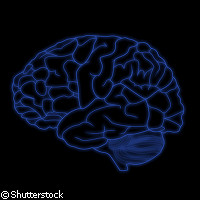Antibody breakthrough in 'mad cow disease' research
Researchers at the UK's University of Liverpool have discovered the atomic structure of the 'binding' between a brain protein and an antibody that could be vital in the search for a cure for neurodegenerative diseases such as variant CJD (Creutzfeldt-Jakob Disease). Their findings are published in the Proceedings of the National Academy of Sciences (PNAS). Variant CJD has hit the headlines over the past two decades because of its ability to transfer from cattle (where it causes the degenerative brain disease Bovine Spongiform Encephalopathy (BSE), also known as 'mad cow disease') to humans. It is a rare progressive neurodegenerative disorder that humans can develop after eating beef products that are infected with BSE. An unusual type of protein called a prion is responsible for the development of variant CJD. Prions can cause a range of illnesses known as TSEs (Transmissible Spongiform Encephalopathies) which include mad cow disease in cattle and scrapie in sheep. Prion diseases are neurodegenerative conditions that affect both animals and human beings. They develop when a natural brain protein called PrP comes into contact with the infectious prions. The prions then transform the PrP proteins into a form with a different shape which leads to a build-up of the protein in the brain, causing brain cells to die. The scientists at Liverpool are researching whether immunisation with certain antibodies that would 'stick' to the PrP could treat the disease and possibly even prevent its development. To get a clearer picture of the connection between PrP and antibodies, the scientists used X-ray crystallography technology. They built a three-dimensional picture of how an antibody called ICSM18 would stick to prion proteins and PrP protein cells. Samar Hasnain, Professor of Molecular Biophysics at the University of Liverpool, said, 'To pinpoint where the antibody 'sticks' to the protein we used X-ray crystallography, pioneered by Nobel Prize winner Max Perutz. Significantly we found that the point at which the protein and antibody came together was also where scientists at the Medical Research Council (MRC) Prion Unit had identified a single amino acid, which we now know has a significant impact on a patient's susceptibility to prion disease.' Scientists at the UK's MRC Prion Unit at University College London collaborated with the University of Liverpool researchers. They found that not only could the ICSM18 antibody help prevent brain cells from becoming infected with prions, but it could also reverse early damage caused by the disease. Professor John Collinge, Director of the MRC Prion Unit, said, 'We have shown that ICSM18 has the highest therapeutic potential in animal and cell based studies, but we have yet to establish its impact on people who have variant CJD or other prion diseases. We are currently working, however, to make human versions of the antibodies for future trials in people.'
Countries
United Kingdom



